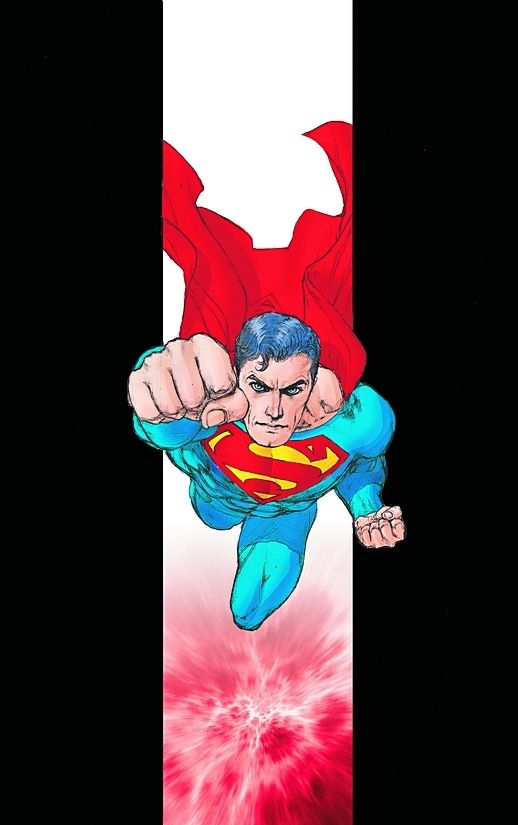Superman Beyond #1, while being a Final Crisis tie-in (and an important one at that) is really more similar to Batman R.I.P. in style, in that with Final Crisis, Morrison appears to be trying to be a bit less opaque with the story, while in RIP and this issue, he does no such thing, and when you throw in some godawful 3-D scenes, the result may be a bit reasonably off-putting.
It is still pretty darn awesome, though.
Essentially, this book, while being a huge bombastic journey presented at breakneck speed with absolutely thrilling Doug Mahnke artwork (some of the best work he's done, but to be honest, most of his work is excellent, so it's kind of hard to differentiate - suffice to say, it's really good), is more aptly noted as meta-fictive text.
Perhaps I am reading it wrong, but it really appears as though Morrison is commenting on the role of the continuity-driven fan (and the stories done in response to said fans) in the destruction of the original multiverse. Originally, there was just one organic multiverse where everything happened (sounds like Hypertime, no?), but then a flaw was entered into the system, and that flaw directly led to both the original Crisis and now the current situation - what would that flaw be? I think Morrison is saying that that flaw was the idea of continuity, the idea that a multiverse "couldn't work" that it "needed to be more realistic and make sense," hence Crisis on Infinite Earths (and later Zero Hour and still later, Infinite Crisis).
Meanwhile, Morrison also plays with the notion that basically, every superhero is a variation of Superman as Superman was THE original superhero, and everything springs out of him.
Then we get into the whole deal with the visit to Limbo (which Morrison also did in Animal Man) - I was pleasantly surprised to see a lot of the Bloodlines heroes represented - I imagine that was Mahnke's idea, I have a hard time believing Morrison remembers any of the Bloodlines heroes (save for that one Irish fellow who would not be in limbo). Merryman is handled brilliantly, especially when he says something that is a lot like Brian Azzarello's Doctor 13 series, where the characters have to almost argue for their relevance. It's poignant stuff, even while it is a joke.
There's a bunch of intriguing discussions about the nature of stories the malleability and never-ending nature of them, as you can always retell a story, etc.
The biggest drawback of the story to me was the terrible 3-D stuff - I don't think it really aided the narrative that much at all, and it sure did not help the artwork, as it did not even look cool. Not cool!!
This is a fascinating text that I think will greatly reward multiple re-reads, much like RIP does.
However, I do have to admit that while fascinating, it can be a bit off-putting, almost like a challenge from Morrison to his readers, and for the most part, I'd prefer a bit more clarity.
Still, as a whole - a very good comic book.
Recommended.


